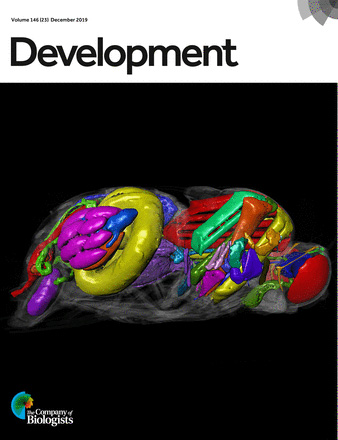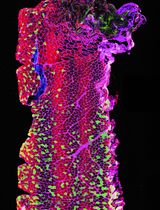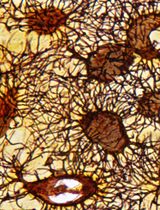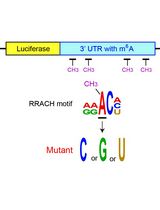- EN - English
- CN - 中文
Mechanical Tissue Compression and Whole-mount Imaging at Single Cell Resolution for Developing Murine Epididymal Tubules
小鼠附睾小管发育过程中的组织机械压缩和单细胞分辨率全胚胎成像
发布: 2020年08月05日第10卷第15期 DOI: 10.21769/BioProtoc.3694 浏览次数: 4512
评审: Giusy TornilloSamuel S HinmanEVANGELOS THEODOROU
Abstract
Cells inside the body are subjected to various mechanical stress, such as stretch or compression provided by surrounding cells, shear stresses by blood or lymph flows, and normal stresses by luminal liquids. Force loading to the biological tissues is a fundamental method to better understand cellular responses to such mechanical stimuli. There have been many studies on compression or stretch experiments that target culture cells attached to a flexible extensible material including polydimethylsiloxane (PDMS); however, the know-how of those targeting to tissues is still incomplete. Here we present the protocol for mechanical tissue compression and image-based analysis by focusing on developing murine epididymis as an example. We show a series of steps including tissue dissection from murine embryos, hydrogel-based compression method using a manual device, and non-destructive volumetric tissue imaging. This protocol is useful for quantifying and exploring the biological mechanoresponse system at tissue level.
Keywords: Epididymal tube (附睾管)Background
Cells can respond to mechanical stimuli through intracellular biochemical signaling pathways. This cellular mechanoresponse is known to play a fundamental role in various biological processes such as embryonic development, regeneration, tissue homeostasis, and cancer metastasis (Mammoto et al., 2013; Humphrey et al., 2014; Vining and Mooney, 2017). Recent experiments regarding force loading externally to the cells have revealed how cells react to the given mechanical stimuli. For example, it has been shown that stretching or compressing a cell monolayer attaching to a flexible silicone substrate like polydimethylsiloxane (PDMS) triggers a mechanosensitive ion channel protein Piezo1 to evoke various cellular behaviors such as cell division and extrusion, leading to homeostatic cell number in the tissues (Eisenhoffer et al., 2012; Gudipaty et al., 2017). There are various force manipulations to adherent culture cells; however, the manipulation methods to volumetric tissues are far from sufficient (Campàs, 2016). Force manipulation can be performed using magnetic oil droplets but specialized devices are required (Serwane et al., 2016). Here we show an easier way to compress a tubular tissue and examine the cellular response by specifically focusing on the murine epididymis.
Materials and Reagents
- 35 mm CELLviewTM dish with glass bottom (Greiner, catalog number: 627871 )
- 2 ml round-bottom microtube (Watson, catalog number: 132-620C )
- Institute of Cancer Research (ICR) pregnant mice (Japan SLC, Slc:ICR)
- Dulbecco’s modified Eagle’s medium (DMEM) (4.5 g/L Glucose) without phenol red (Nacalai Tesque, catalog number: 08489-45 )
- Fetal bovine serum (FBS) (Thermo Fisher Scientific, catalog number: 12483 )
- Penicillin-streptomycin mixed solution (Nacalai Tesque, catalog number: 26253-84 )
- Hank’s balanced salt solution (HBSS) with Ca, Mg, without phenol red (Nacalai Tesque, catalog number: 09735-75 )
- Triton X-100 (Nacalai Tesque, catalog number: 35501-15 )
- 4%-Paraformaldehyde (PFA) phosphate buffer solution (Nacalai Tesque, catalog number: 09154-85 )
- Normal goat serum (Abcam, catalog number: ab156046 )
- Rabbit monoclonal anti-E-cadherin (24E10) antibody (Cell Signaling Technology, catalog number: 3195 )
- Goat anti-rabbit IgG (H+L) highly cross-adsorbed secondary antibody, Alexa Fluor 546 conjugate (Thermo Fisher Scientific, catalog number: A-11035 )
- Agarose (Nippon Gene, catalog number: 316-01191 )
- Cellmatrix collagen type I-A (3 mg/ml, pH 3.0) (Nitta Gelatin, catalog number: 637-00653 )
- Matrigel growth factor reduced (Corning, catalog number: 356231 )
- Tissue clearing reagents CUBIC-R+ (Tokyo Chemical Industry, catalog number: T3741 )
- Culture Media (see Recipes)
- PBST (see Recipes)
Equipment
- Forceps (Fine Science Tools, catalog number: 11251-30 )
- Scissors with straight and sharp tip (Fine Science Tools, catalog number: 14084-08 )
- Polydimethylsiloxane (PDMS) stretch chamber (STREX, catalog number: STB-CH-04 )
- Manual uniaxial stretching device (STREX, catalog number: STB-100 )
- Plasma cleaning equipment (STREX, catalog number: PC-40 )
- Tube rotator (WakenBtech, model: WKN-2210 )
- CO2 incubator (Sanyo, model: MCO-18AIC )
- Shaker (WakenBtech, model: WKN-2240 )
- Confocal microscope (Leica, model: TCS SP8 )
Software
- ImageJ (National Institute of Health, https://imagej.nih.gov/ij/)
Procedure
文章信息
版权信息
© 2020 The Authors; exclusive licensee Bio-protocol LLC.
如何引用
Hirashima, T. (2020). Mechanical Tissue Compression and Whole-mount Imaging at Single Cell Resolution for Developing Murine Epididymal Tubules. Bio-protocol 10(15): e3694. DOI: 10.21769/BioProtoc.3694.
分类
发育生物学 > 形态建成 > 器官形成
细胞生物学 > 组织分析 > 组织成像
您对这篇实验方法有问题吗?
在此处发布您的问题,我们将邀请本文作者来回答。同时,我们会将您的问题发布到Bio-protocol Exchange,以便寻求社区成员的帮助。
Share
Bluesky
X
Copy link












